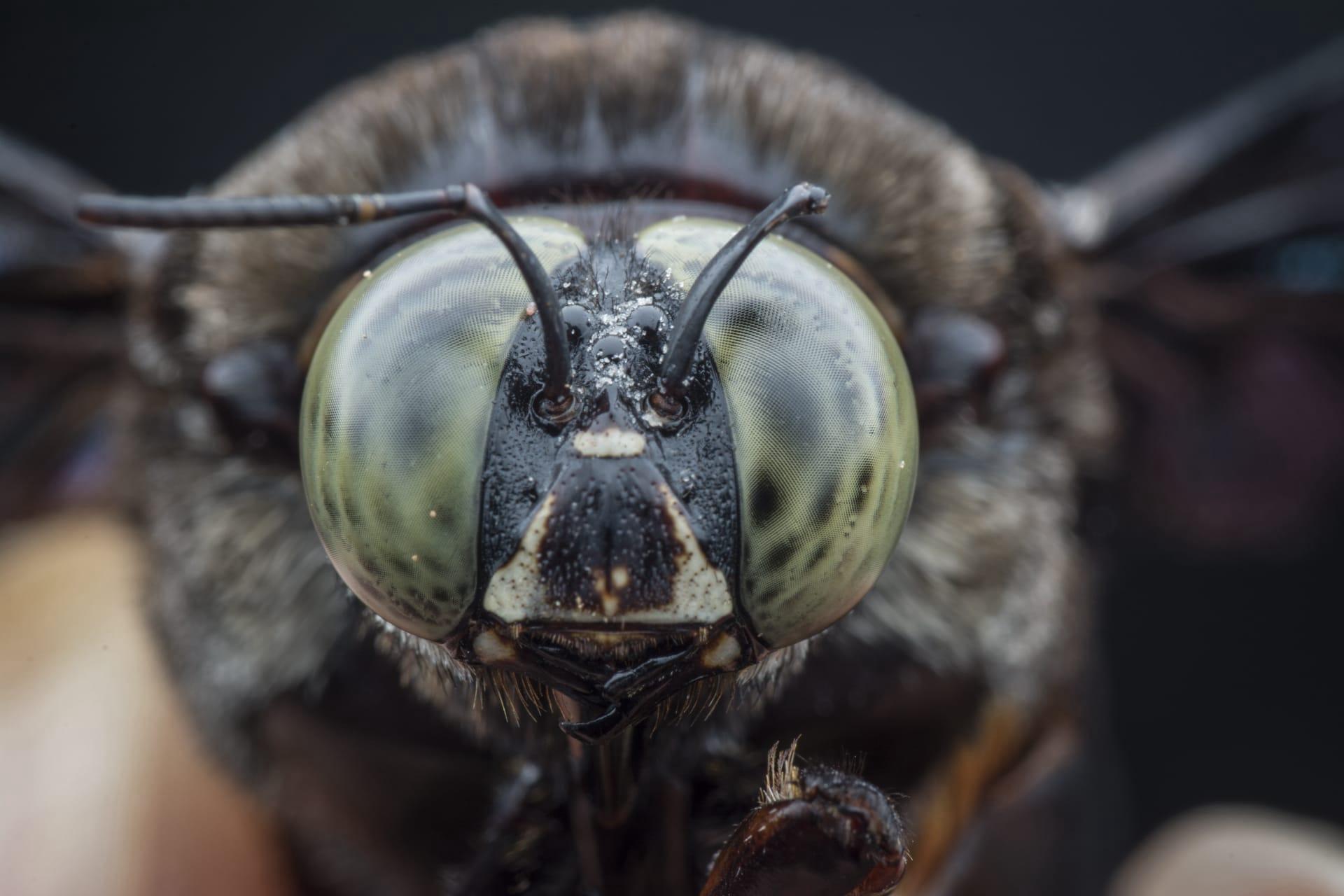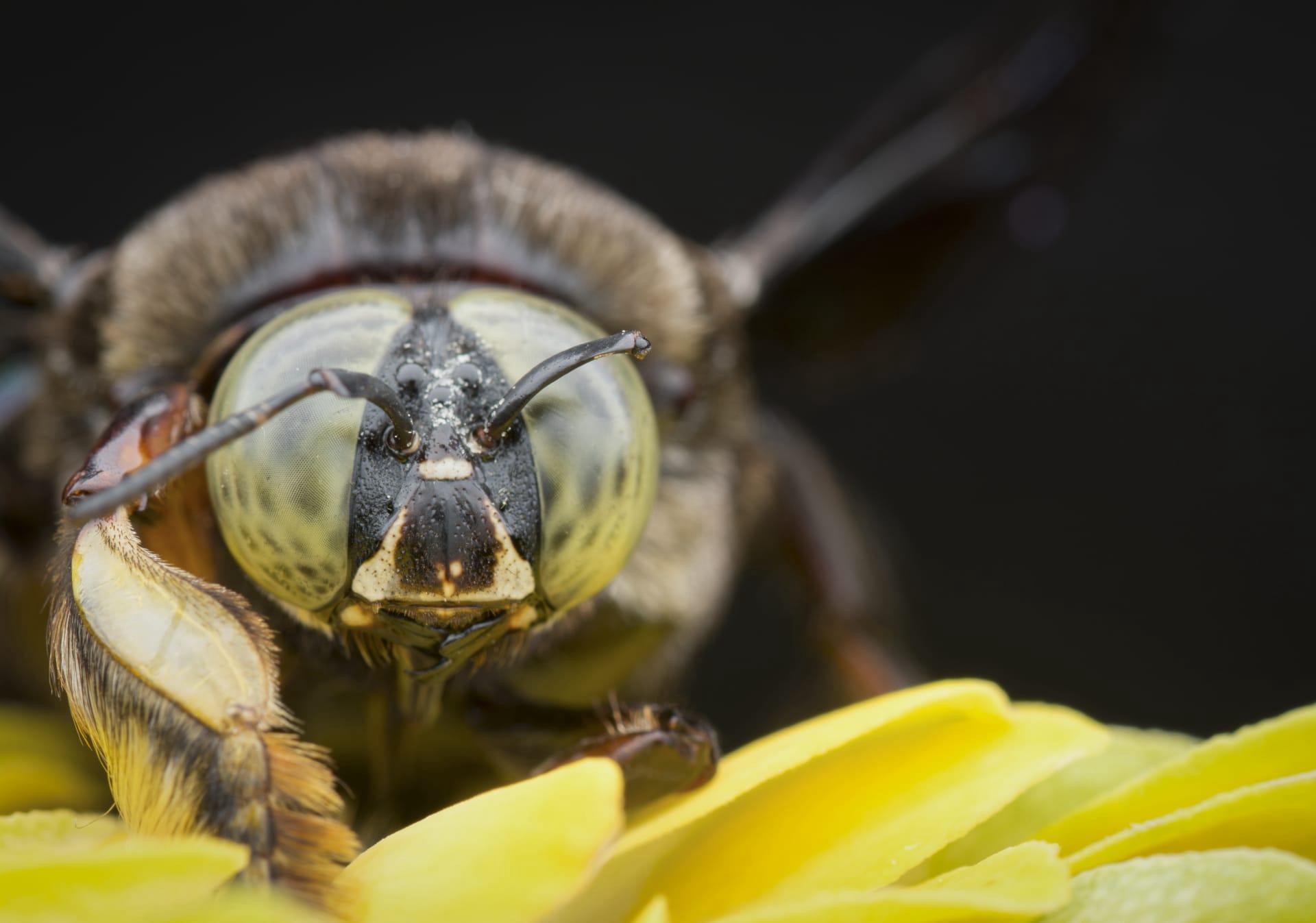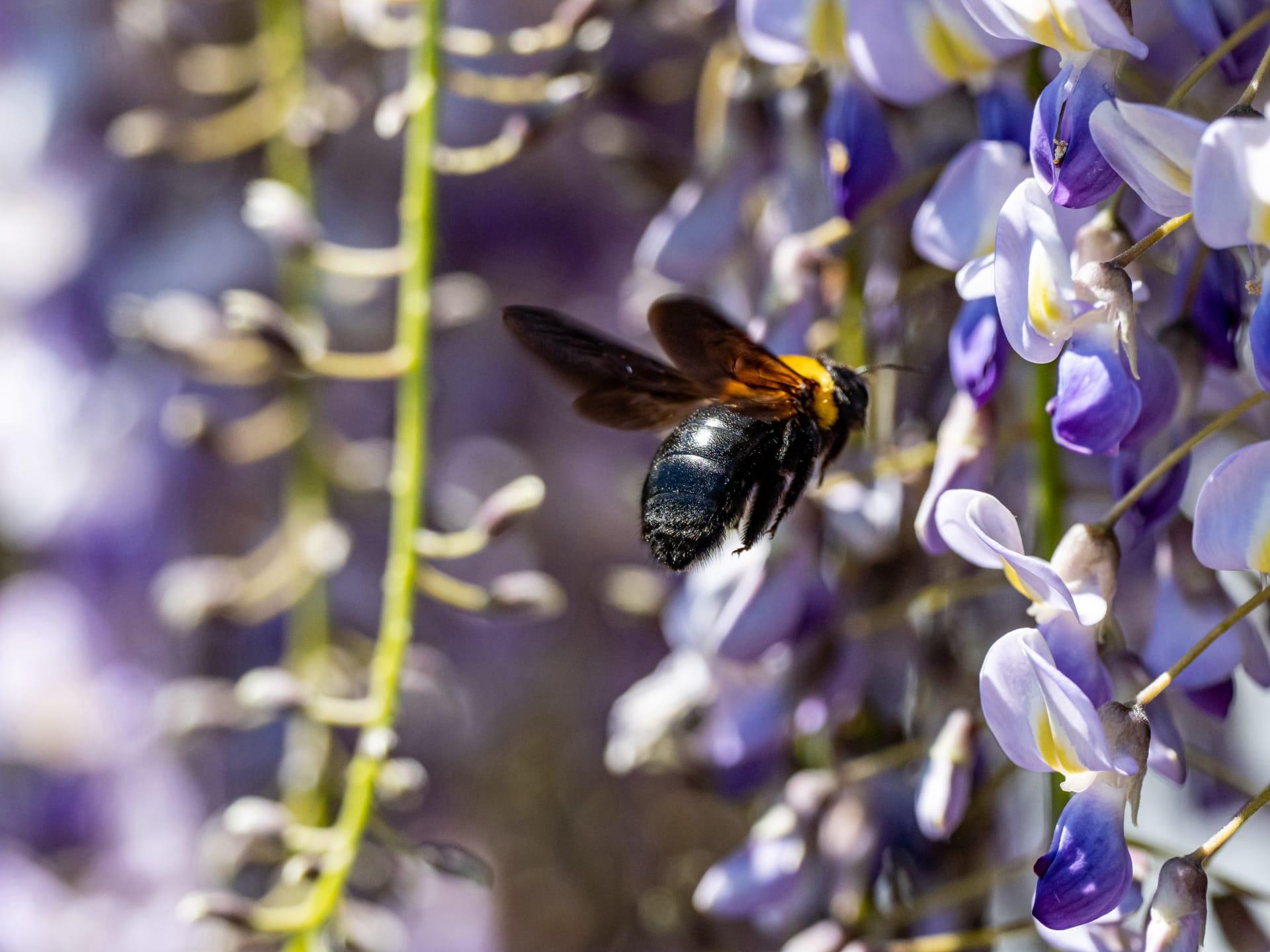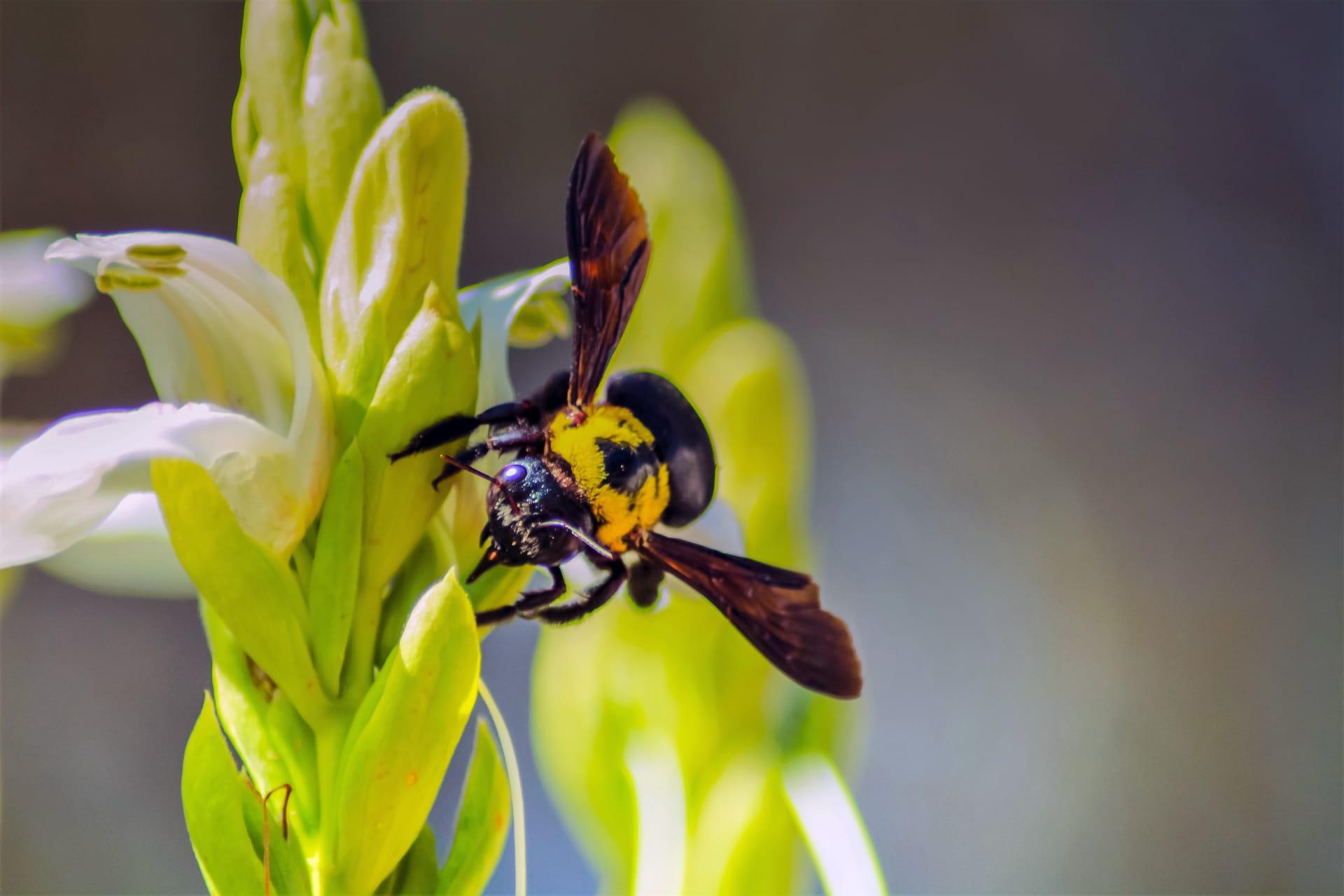Carpenter Bee Characteristics
- Home /
- Mini Encyclopedia /
- Animal /
- Carpenter Bee Characteristics
1
Carpenter bees, fascinating creatures of the insect world, are robust and solitary bees, easily recognized by their sizeable black and yellow bodies. Typically, these bees range from about 12 to 25 millimeters in length, depending on the species and the region they inhabit. They possess a unique, shiny, and smooth abdomen, distinguishing them from their bumblebee cousins, which tend to have a more hairy appearance. One of the most intriguing aspects of carpenter bees is their lifespan, which varies from one to several years, influenced by environmental conditions and predation levels.
Among the most remarkable organs of the carpenter bee is its powerful mandibles. These are not just any biting tools; they are precision instruments that allow the bee to burrow into wood to create nests. The mandibles are strong enough to chew through wood but are used in a way that minimizes damage to living plants. This nesting behavior is essential for their reproduction and provides a safe haven for their larvae. The carpenter bee's ability to tunnel into wood using its mandibles is a unique adaptation that sets it apart from other bee species and plays a crucial role in their life cycle.

2
Question: Why do carpenter bees drill holes in wood?
Answer: Carpenter bees drill holes in wood not to eat the wood, but to build nests where they can lay their eggs and protect their offspring. These bees are solitary, meaning each female bee tends to her own nest. The tunnels they create are meticulously crafted into soft, untreated wood, such as fence posts, deck rails, and eaves of buildings. Inside these tunnels, the female bee constructs individual cells for her eggs, provisioning each with a mixture of pollen and nectar for the larvae to feed on once they hatch. This nesting behavior is crucial for the continuation of their lifecycle and has the side effect of sometimes causing cosmetic damage to wooden structures.

3
Carpenter bees are known for their impressive flight capabilities. They are capable of hovering in place, darting quickly in various directions, and even flying backwards, making them agile flyers. This agility aids them in evading predators and efficiently navigating between flowers when foraging for nectar and pollen. Their flight muscles are incredibly strong, allowing them to perform these complex maneuvers with ease and precision.
When it comes to feeding, carpenter bees are primarily nectarivores, meaning their diet mainly consists of nectar from flowers. However, they also collect pollen, which serves as a protein source, especially important for the developing larvae. The female bee has specialized structures on her hind legs called pollen baskets, which enable her to collect and transport pollen back to the nest. This dual diet of nectar and pollen ensures that both the adult bees and their offspring have the necessary nutrients for survival and development.

4
The habitat of carpenter bees is quite varied, ranging from forested areas to urban gardens. They prefer nesting in softwoods such as pine, cedar, and redwood, which are easier to excavate. These bees are adaptable and can be found in diverse environments, from rural to urban settings, wherever there are wooden structures or trees suitable for nesting. Their presence is crucial for the pollination of many plants and flowers, contributing significantly to the biodiversity of their habitats.
Reproduction for carpenter bees involves a fascinating process. The female bee lays her eggs in the wooden tunnels she has created, placing one egg in each cell along with a supply of food. After laying an egg, she seals off the cell with a chewed wood pulp partition, ensuring the safety and sustenance of the developing larva. This methodical approach to nesting and egg-laying ensures that each offspring has the best chance of survival. The male bee, often seen guarding the nest entrance, does not have a stinger but is aggressive towards intruders, playing a vital role in protecting the next generation.

5
Book: "The Secret Life of Bees: Understanding Carpenter Bees and Their World" by Dr. Emily Hart. Published in the United States in 2015, this book delves into the intricate behaviors, biology, and ecological significance of carpenter bees. Dr. Hart, an entomologist with a deep passion for bees, provides readers with a detailed exploration of the life cycle, nesting habits, and foraging patterns of these solitary bees, enriched with personal observations and scientific research.
Book: "Carpenter Bees: Architects of the Insect World" by Jonathan Greene. This work, published in the United Kingdom in 2018, offers a comprehensive overview of carpenter bees' role in ecosystems, their architectural abilities in wood tunneling, and their interactions with humans and other species. Greene, a wildlife biologist, combines vivid photographs with engaging narratives to bring the world of carpenter bees to life, aiming to foster appreciation and conservation efforts for these often misunderstood creatures.